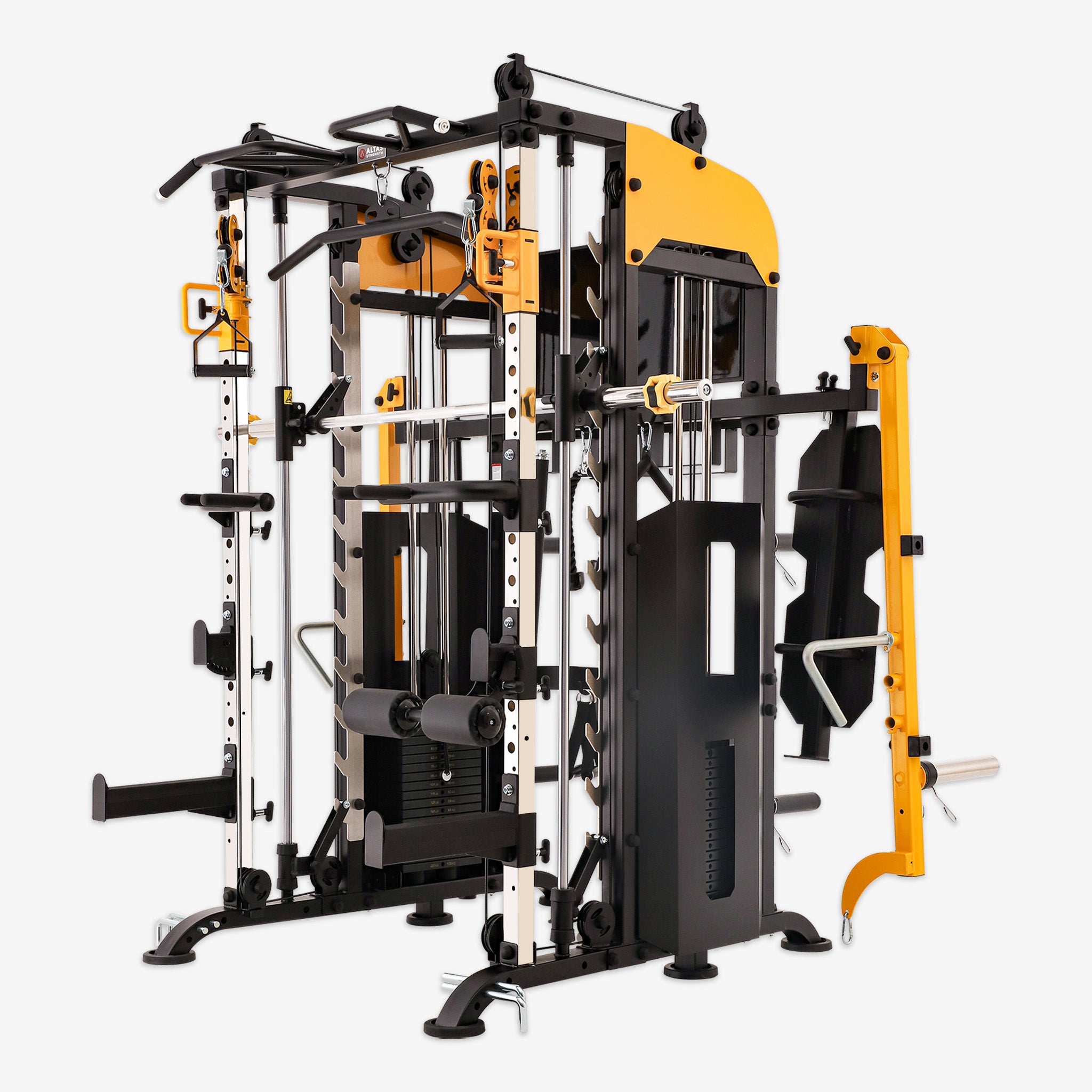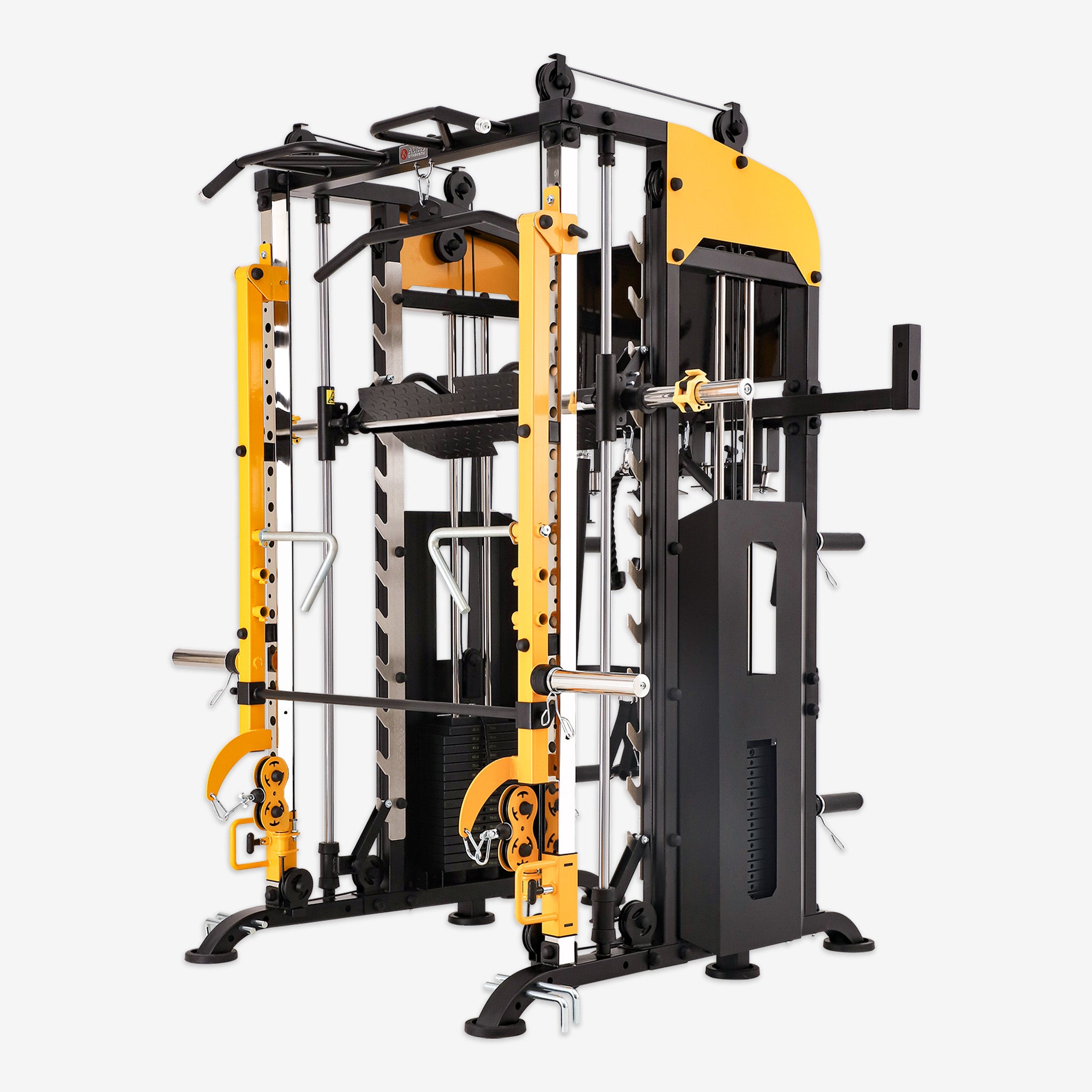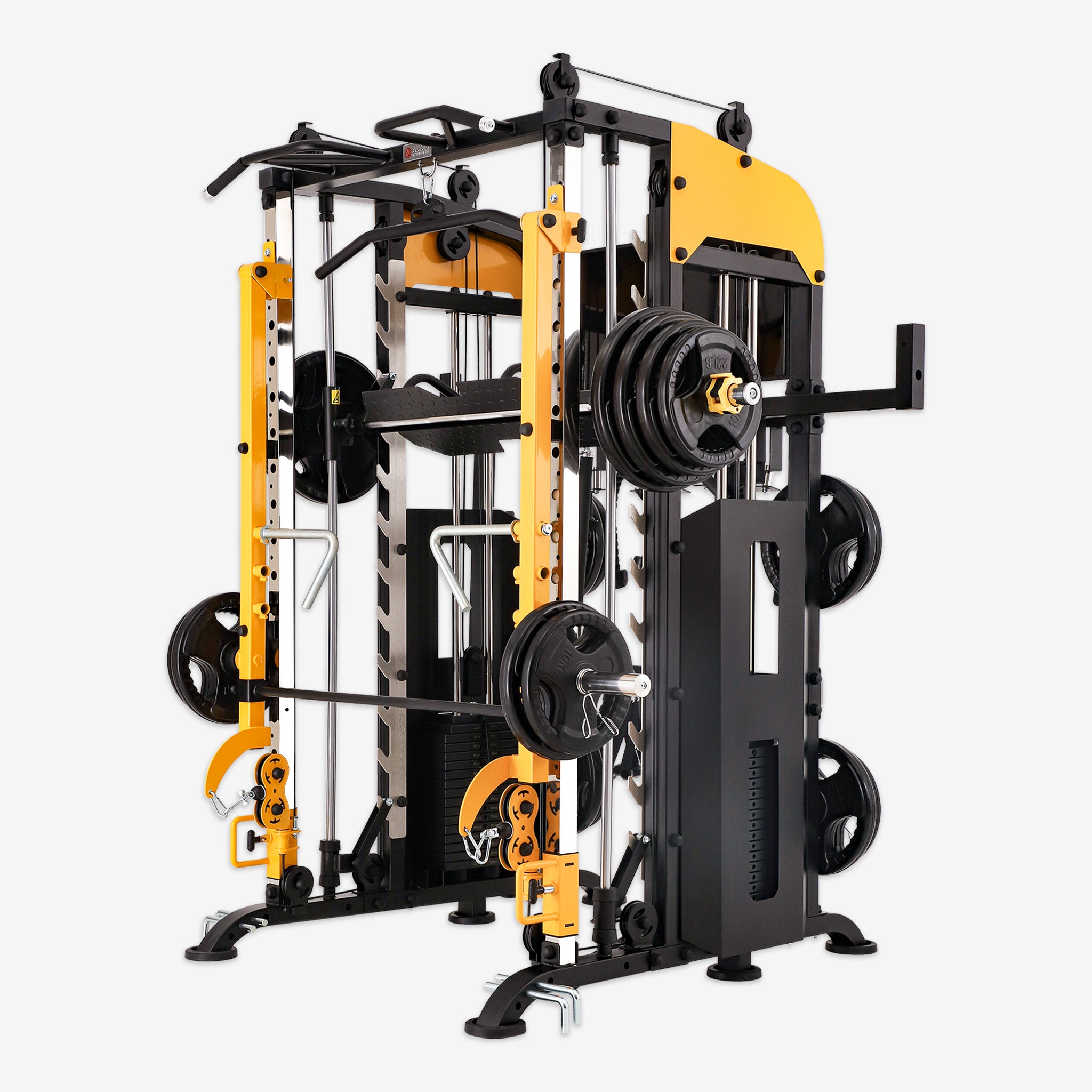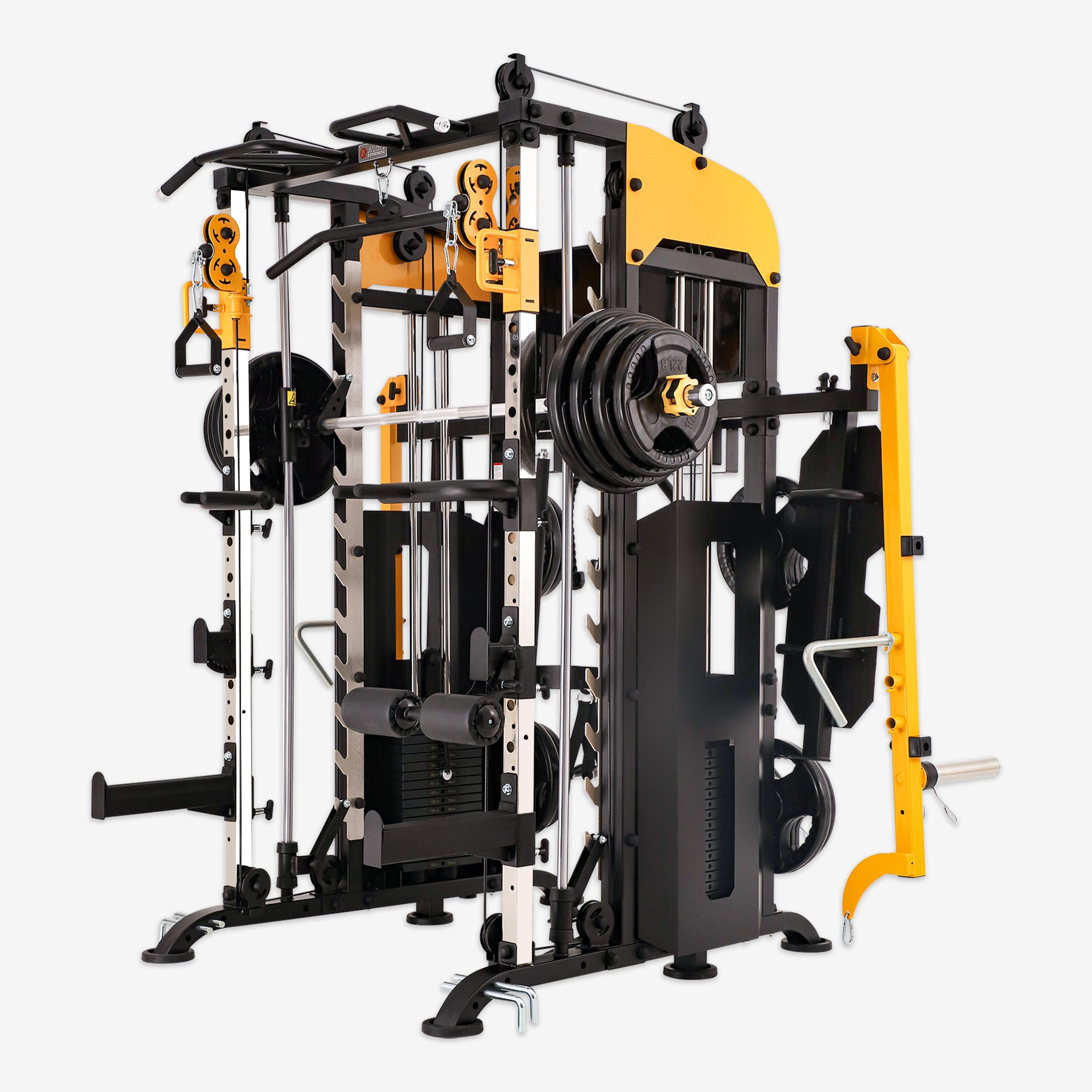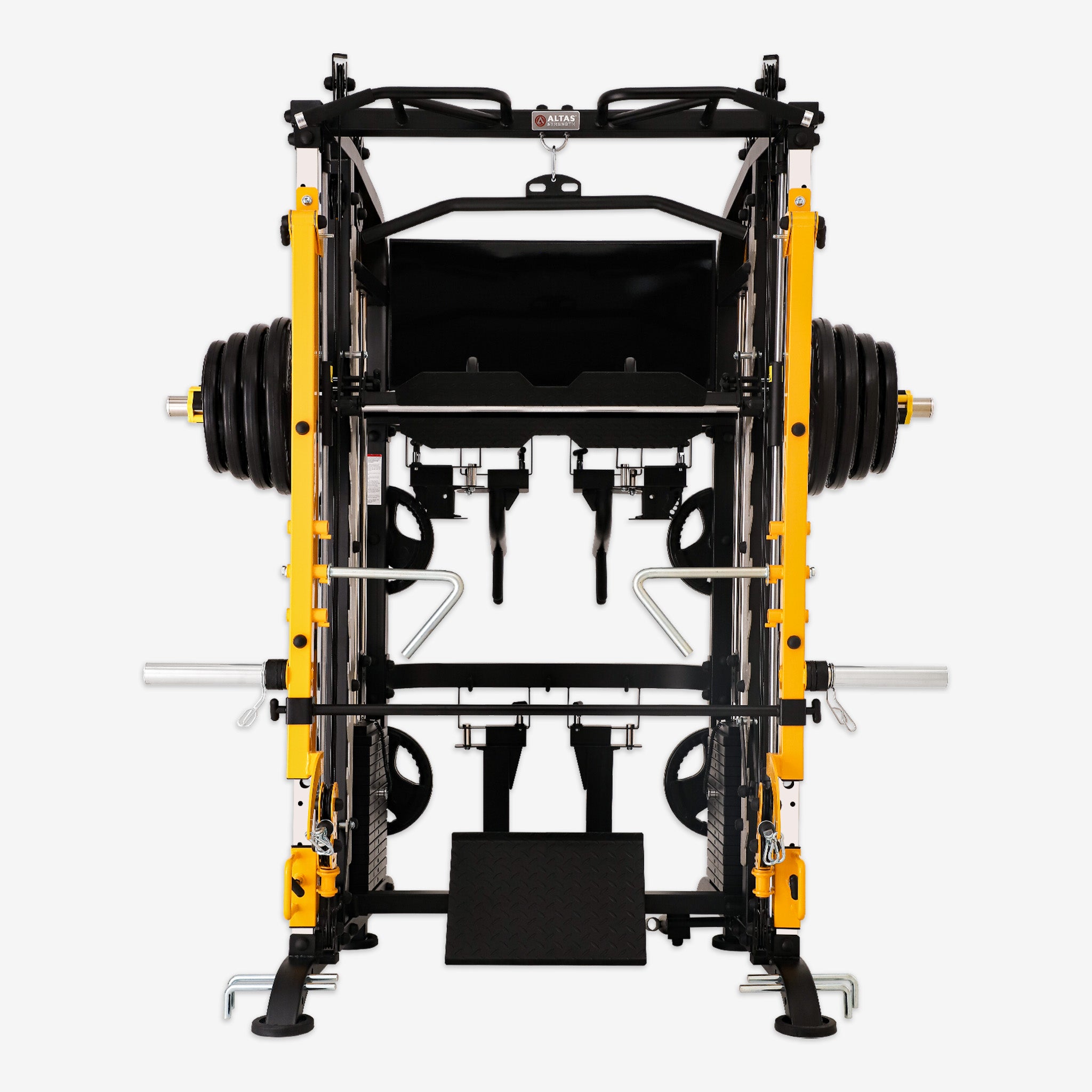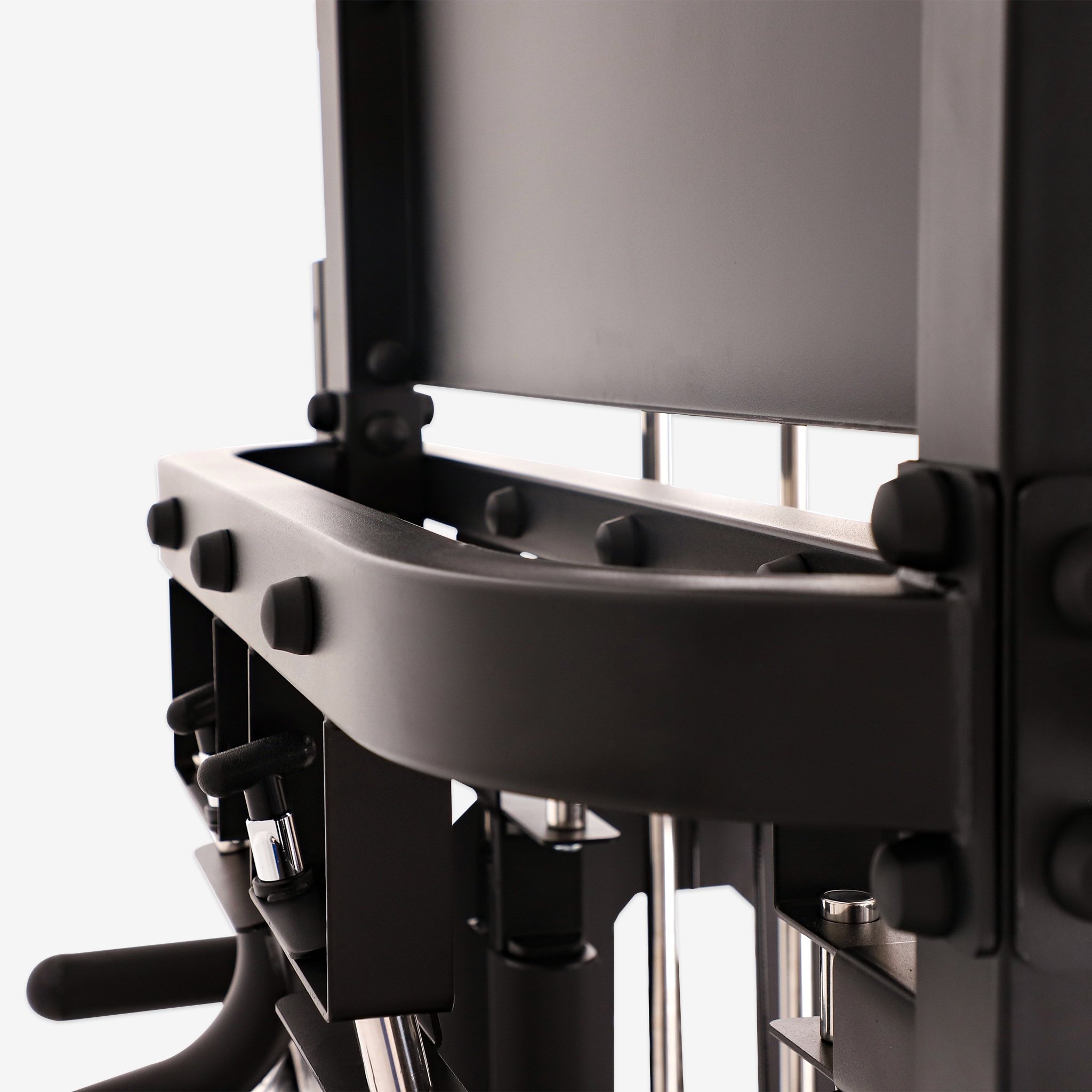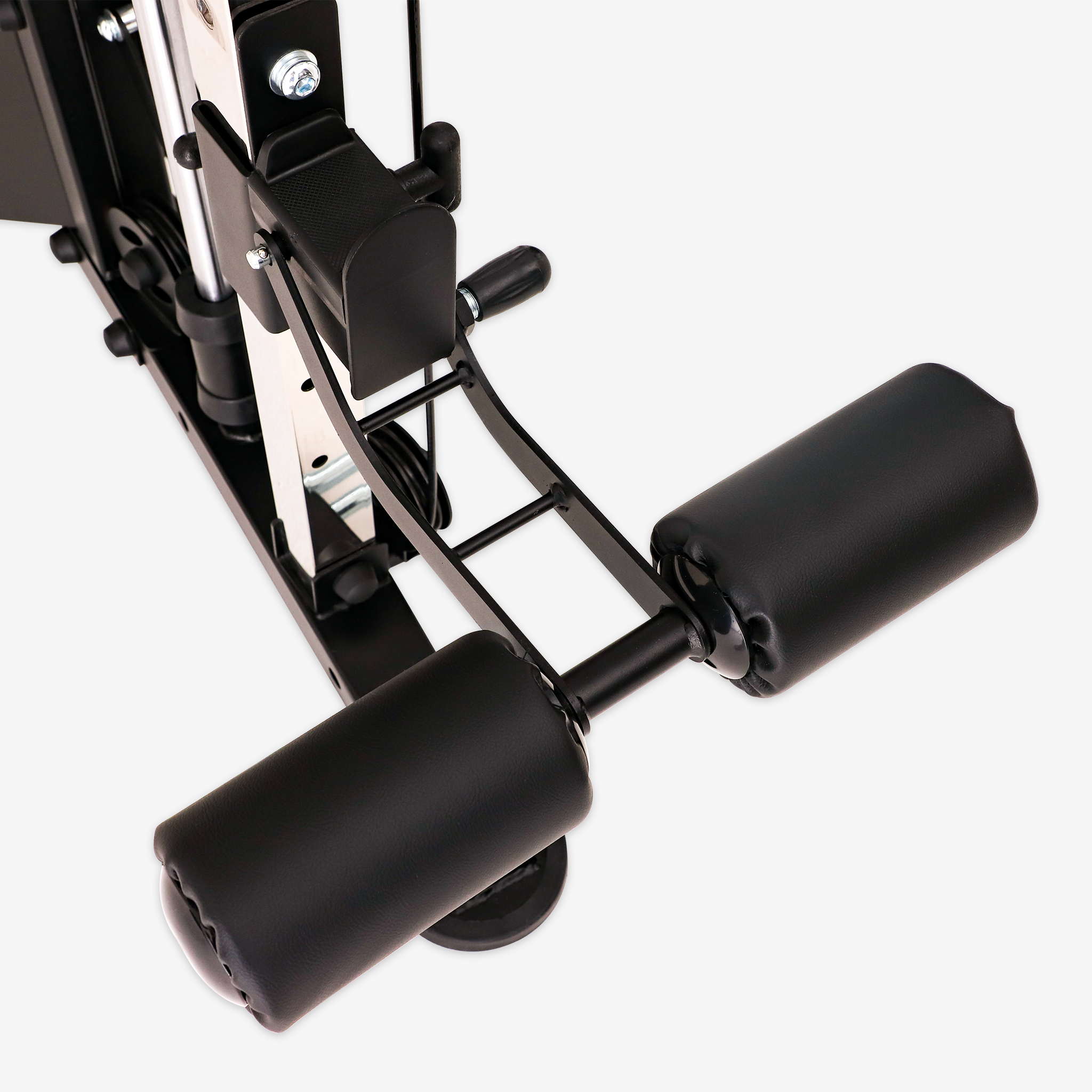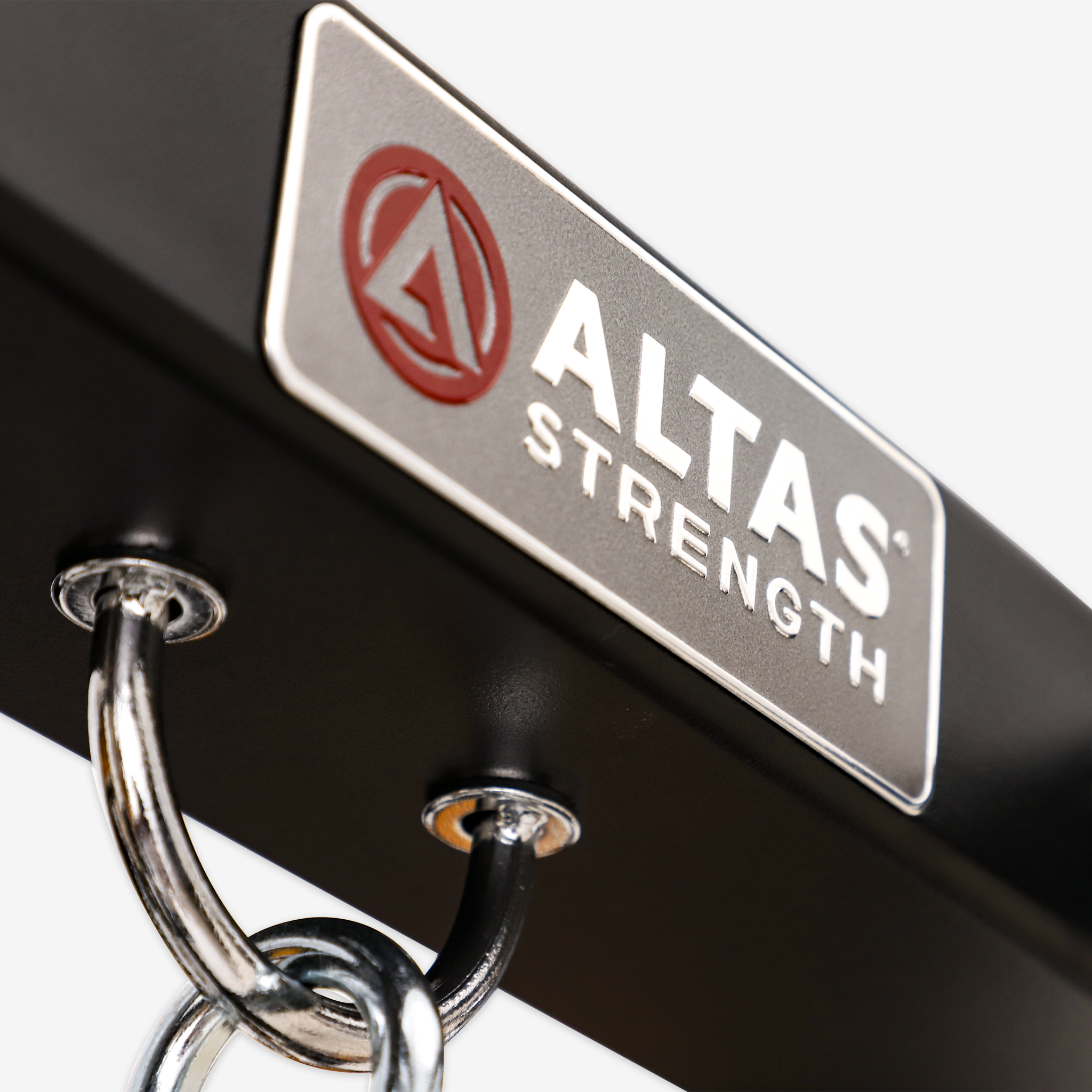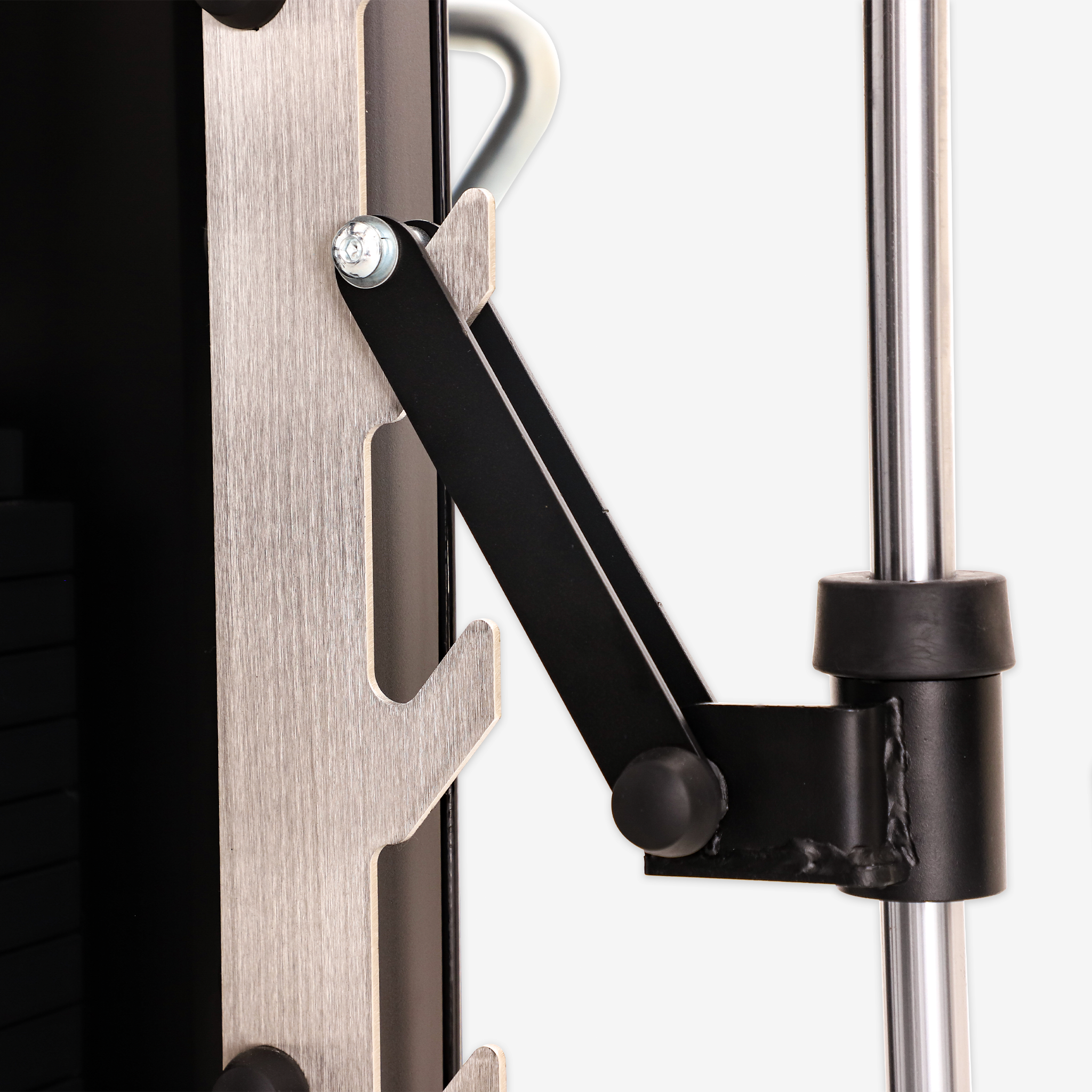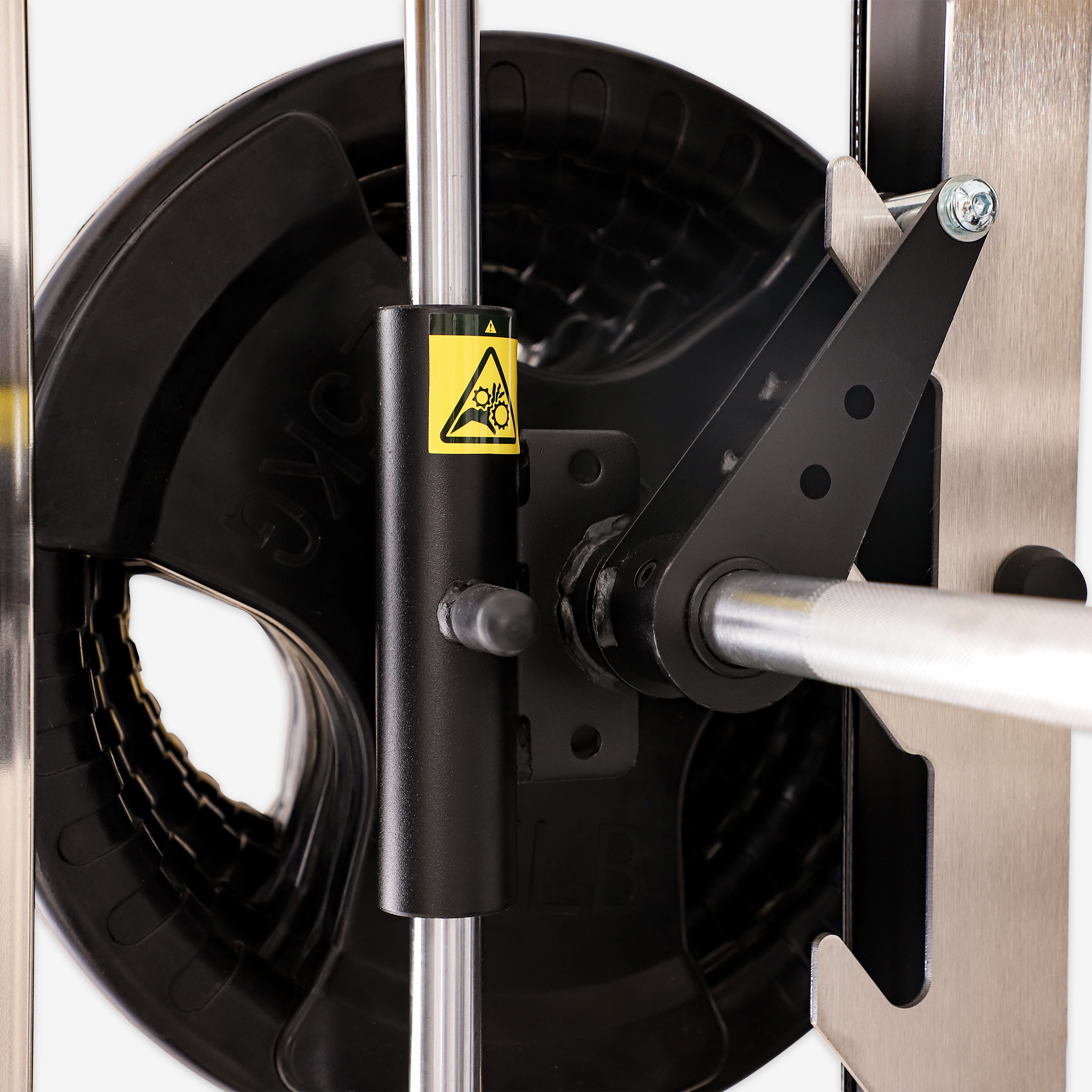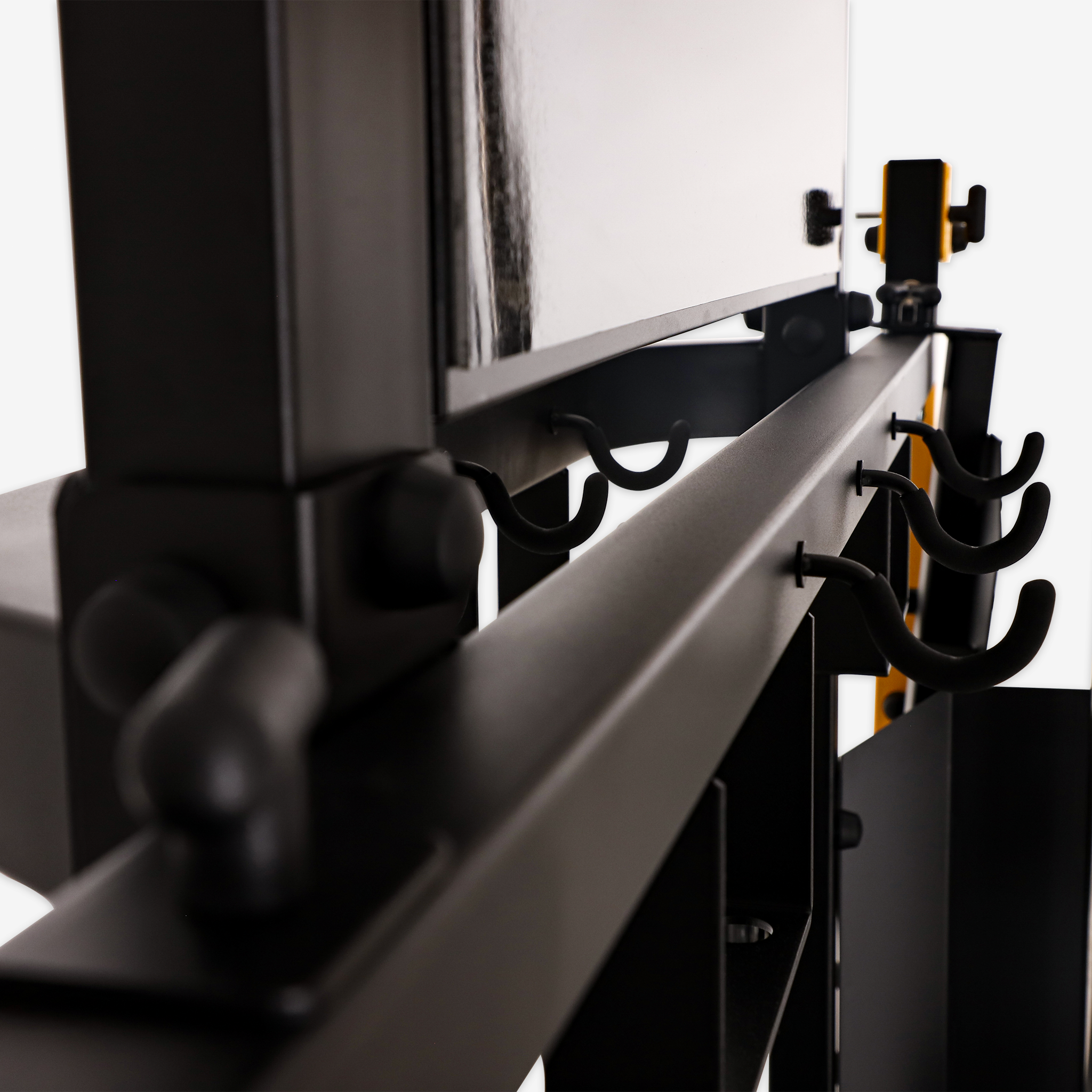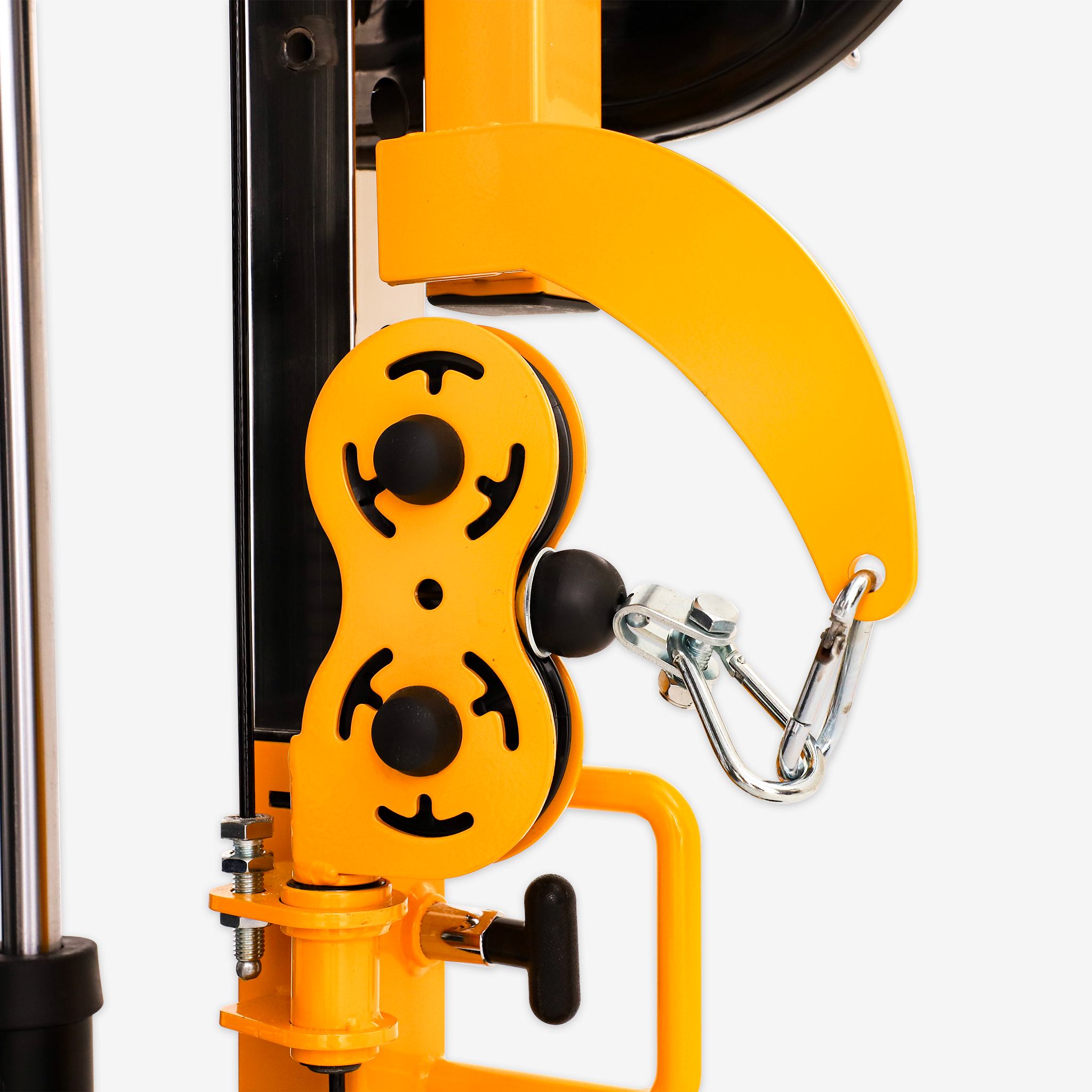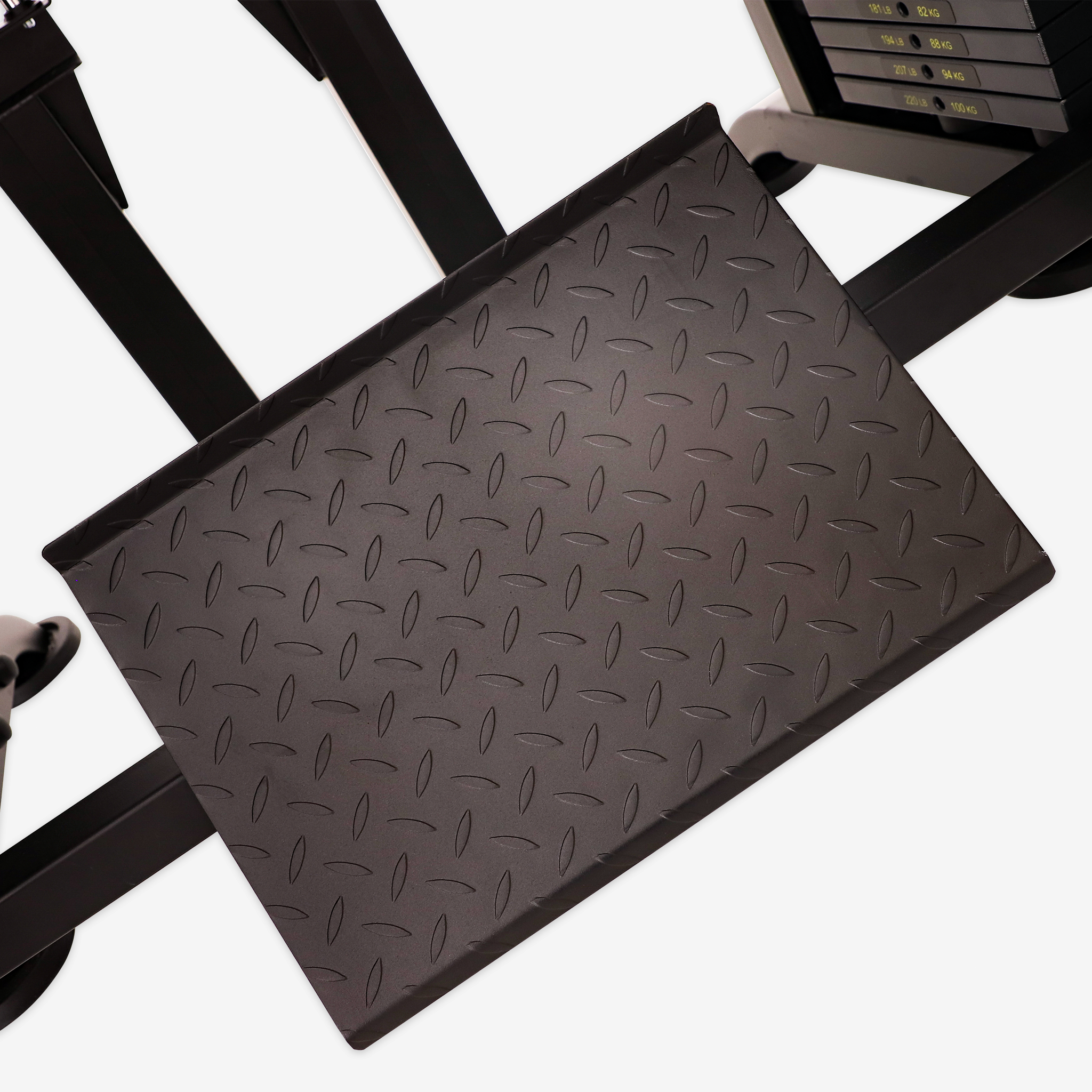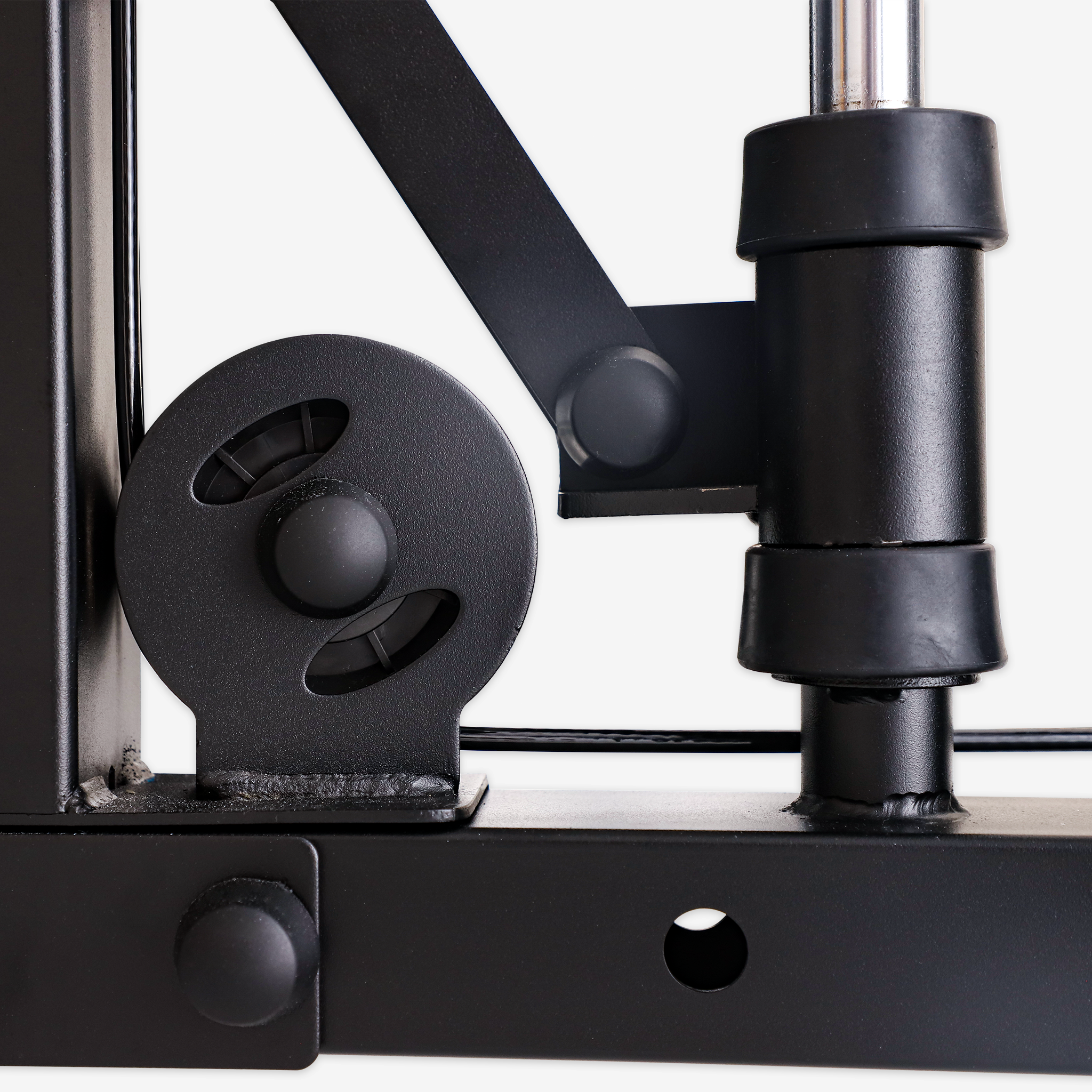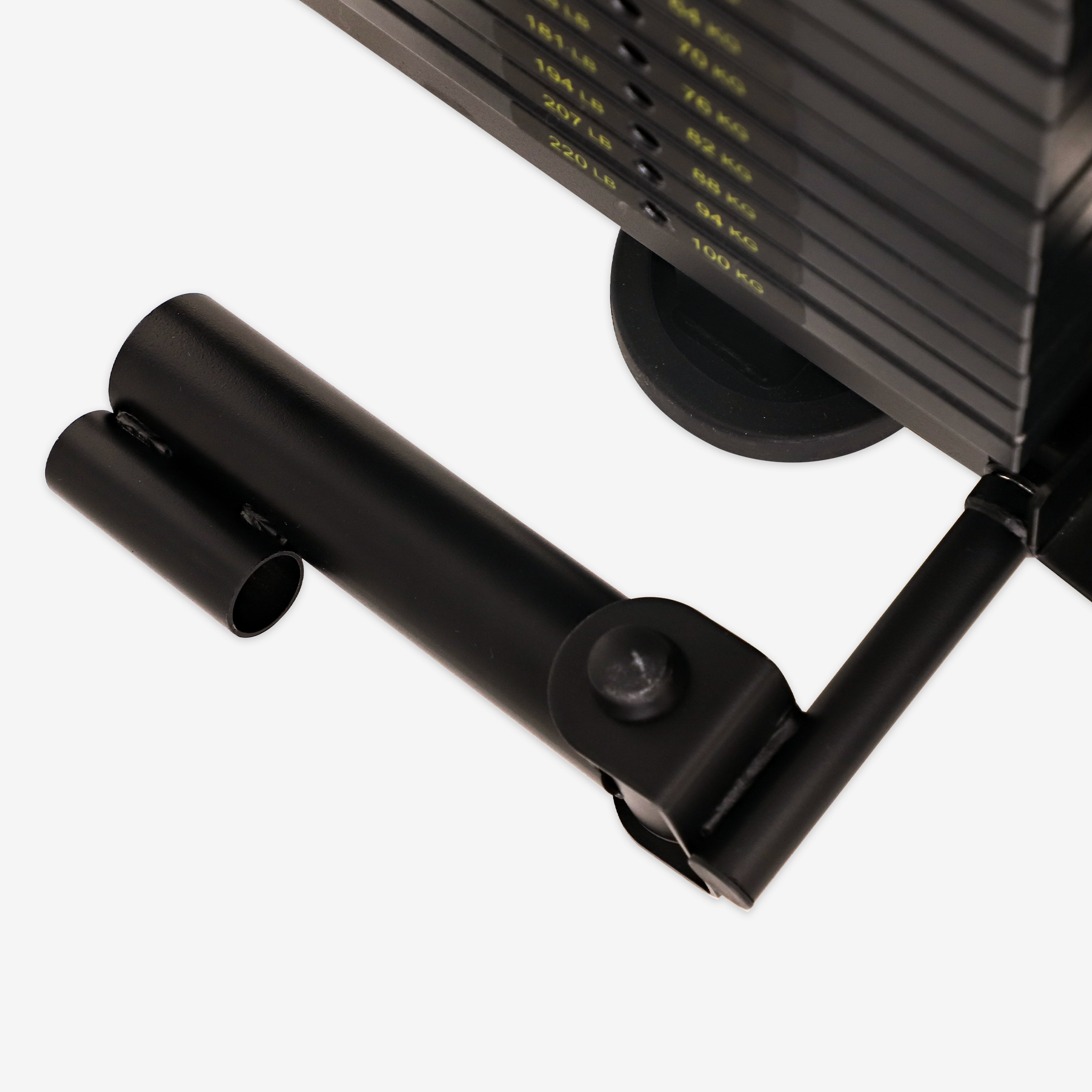Introduction
When working out with a Smith machine, understanding the weight of the barbell is essential for effective and safe strength training. While the standard weight of a Smith machine barbell is 20 kilograms (approximately 45 pounds), variations exist depending on the machine’s design and the manufacturer. This guide explores the design features of the Smith machine, the impact of barbell weight on training, and key considerations for maximizing your workouts.
Design Features
Unlike free barbells, a Smith machine barbell moves along a fixed vertical or slightly inclined track. This design provides greater stability and minimizes the risk of balance-related injuries. The fixed path ensures that the bar moves in a controlled manner, making it a safer option, especially for beginners.
Factors Influencing Training Effectiveness
-
Impact of Barbell Weight on Training
- Basic Strength Training: The 20-kilogram barbell is suitable for foundational exercises like squats, bench presses, and shoulder presses. Beginners can use the bar’s inherent weight to master these movements before gradually adding extra weight.
- Adding Weight: For more advanced lifters, additional weight plates can be added to increase resistance. This allows for progressive overload, a key principle in strength training.
-
Safety and Stability
- Safety Lock Mechanism: Most Smith machines are equipped with a safety lock feature, allowing the barbell to be locked at any height. This is crucial for preventing accidents during solo workouts, especially when lifting heavier weights.
- Fixed Track: The fixed track of the Smith machine provides stability, making it easier to maintain proper form. This feature is particularly beneficial for novices who are still developing their balance and coordination.
-
Adaptation to Different Training Goals
- Strength and Muscle Growth: The Smith machine is ideal for compound movements like bench presses and squats, which target major muscle groups. These exercises are effective for building muscle strength and size.
- Functional Training: While the fixed path of the bar may limit natural movement, the Smith machine can still be used for functional exercises, such as single-leg squats or presses, to enhance stability and coordination.
Recommendations for Using the Smith Machine
- Confirm Barbell Weight: Before starting your workout, verify the barbell’s weight. This information can typically be found on the machine itself or by asking gym staff.
- Gradually Increase Load: Start with the barbell’s inherent weight and focus on mastering your form. Gradually add weight plates as you become more comfortable with the exercises.
- Prioritize Safety: Always engage the safety lock during high-intensity lifts and ensure that your workout space is clear of obstructions.
Conclusion
Understanding the weight of the Smith machine barbell and its design features is crucial for optimizing your strength training. Whether you're a beginner or an experienced lifter, using the Smith machine effectively can help you achieve your fitness goals while minimizing the risk of injury.

